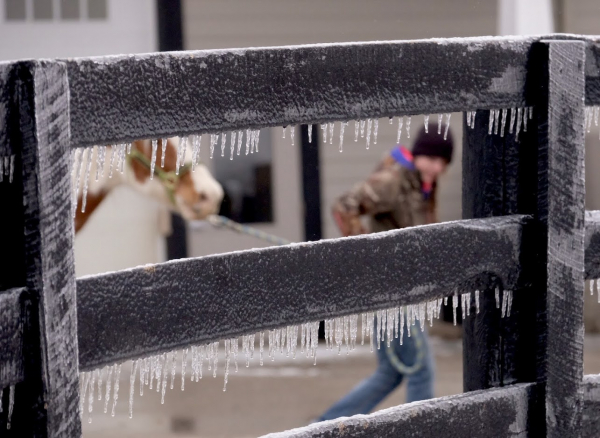Heading into winter, it’s always a good idea to run through a checklist of what your horse will need for the snowy months ahead. Here are a few of our recommendations:
Water Sources
Make sure that your water trough or buckets have a good heating source to prevent them from freezing! It’s important to make sure that your heater not only works, but it is also in a safe working condition. Waterers should be monitored and replaced as needed due to the risk of electrical shock. Horses have a higher risk of dehydration and colic during the winter due to decreased water intake. Be sure to check their water sources daily to be sure they are not frozen.
Feed
During the winter, horses expend more energy keeping themselves warm. A horse’s energy needs to increase in extreme cold: about 1% for each degree below 18°F. So if the temperature is 0°F, a 1,000-pound idle adult horse would need approximately 2 additional pounds of forage (i.e. hay) daily. Feed intake should also be increased for older horses and hard keepers. This can be in the form of increased forage or grains, depending on how easily your horse can eat. Always increase forages first. Horses that are underweight should have fat and protein sources increased too. Blanketing can also be done to conserve calories. Additionally, consider where your food sources are at. Are they easily accessible, or surrounded by a moat of ice and muddy water? Be sure to continue offering free choice salt in accessible areas.
Shelter
Provide a barn or lean-to where your horses can get out of the elements. A place to keep them dry and out of the wind is a must. When the weather turns nasty during blizzards, ice storms, or freezing rain, consider bringing your horses into the barn. Some horses do well with their thick fur coats in the winter, while others have a more difficult time.
Blanketing Considerations
Pull out your blankets and make sure none are in need of any repairs or cleaning. Also evaluate your horse to see if they may have any changes to their blanketing needs this year, such as a change in their environment, body condition, or age.
Clipped horses: Consider putting a lightweight blanket on between 40-50 degrees Fahrenheit, a medium weight between 32-40 degrees, or a heavyweight blanket below 32 degrees. A sheet can be placed under the heavyweight blanket if needed below 25 degrees.
Medium coat or trace-clipped horses: Consider putting a lightweight blanket on between 32-45 degrees, a medium weight between 25-32 degrees, or a heavyweight blanket below 25 degrees.
Thick coated horses: Consider putting a lightweight blanket on between 25-45 degrees, or a medium to heavyweight blanket below 25 degrees as needed.

